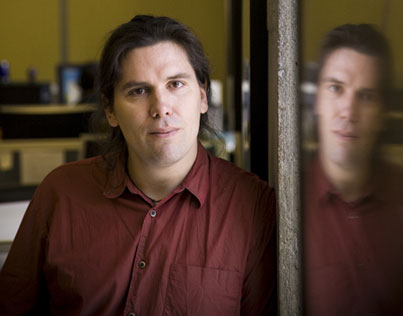MCGILL'S WATERWORLD
The war between food and water

Garry Peterson
For most of us, water is just water. Take one molecule of hydrogen; add two molecules of oxygen and what more is there to say? Plenty, said Garry Peterson of the Department of Geography and the McGill School of Environment.
"People tend to focus on the parts of the hydrological cycle they can see, like streams, rivers and rainfall," he said. "We now call these 'blue water,' as opposed to 'green water' in soil moisture or evapotranspiration from plants."
Green water, says Peterson, McGill's Canada Research Chair in Social-Ecological Modelling, is being neglected at the environment's peril. In a study published in the journal Trends in Ecology and Evolution, Peterson and his colleagues Elena Bennett of McGill and Line Gordon of Stockholm University argue that human agricultural practices are changing the water cycle and the relationship between blue water and green water in unpredictable and potentially dangerous ways.
"These effects aren't necessarily going to result in gradual change," explained Peterson. "They can result in surprising, dramatic changes, what we call eco-system flips."
By way of example, Peterson points to the recent outbreak of toxic algae blooms in Quebec lakes, the consequence of nutrients from fertilizers intended to grow crops permeating the soil and running off into lakes and streams.
"And as you get more and more nutrients in the soil, you can even completely stop farming and all the nutrients will still be there," he said. "You can go past a tipping point where it's very difficult to reverse. We could end up with dead zones like those in the coastal zones of the Gulf of Mexico."
Because ecosystems vary so significantly, these problems will affect different parts of the world disproportionately. Due to widespread deforestation over the last two centuries, Peterson says, Australia is now suffering from devastating dryland salizination. With the forests gone, water tables gradually rose in many parts of the country and pushed the salt in Australia's ancient soil all the way to the surface, rendering it virtually incapable of supporting agriculture.
"In some places there's so much salt, it looks like snow drifts," he said.
In Brazil, the controversial practice of slashing and burning swaths of the Amazon rainforest and turning them into grasslands for grazing animals may devastate even those parts of the forest left intact.
"It's been shown that between 30 and 50 per cent of the rainfall further inland is recycled from evaporation from vegetation. If you decrease the amount of evaporation by converting forest to grassland, the water doesn't get carried so far inland and you lose the possibility of even having forest," Peterson said.

